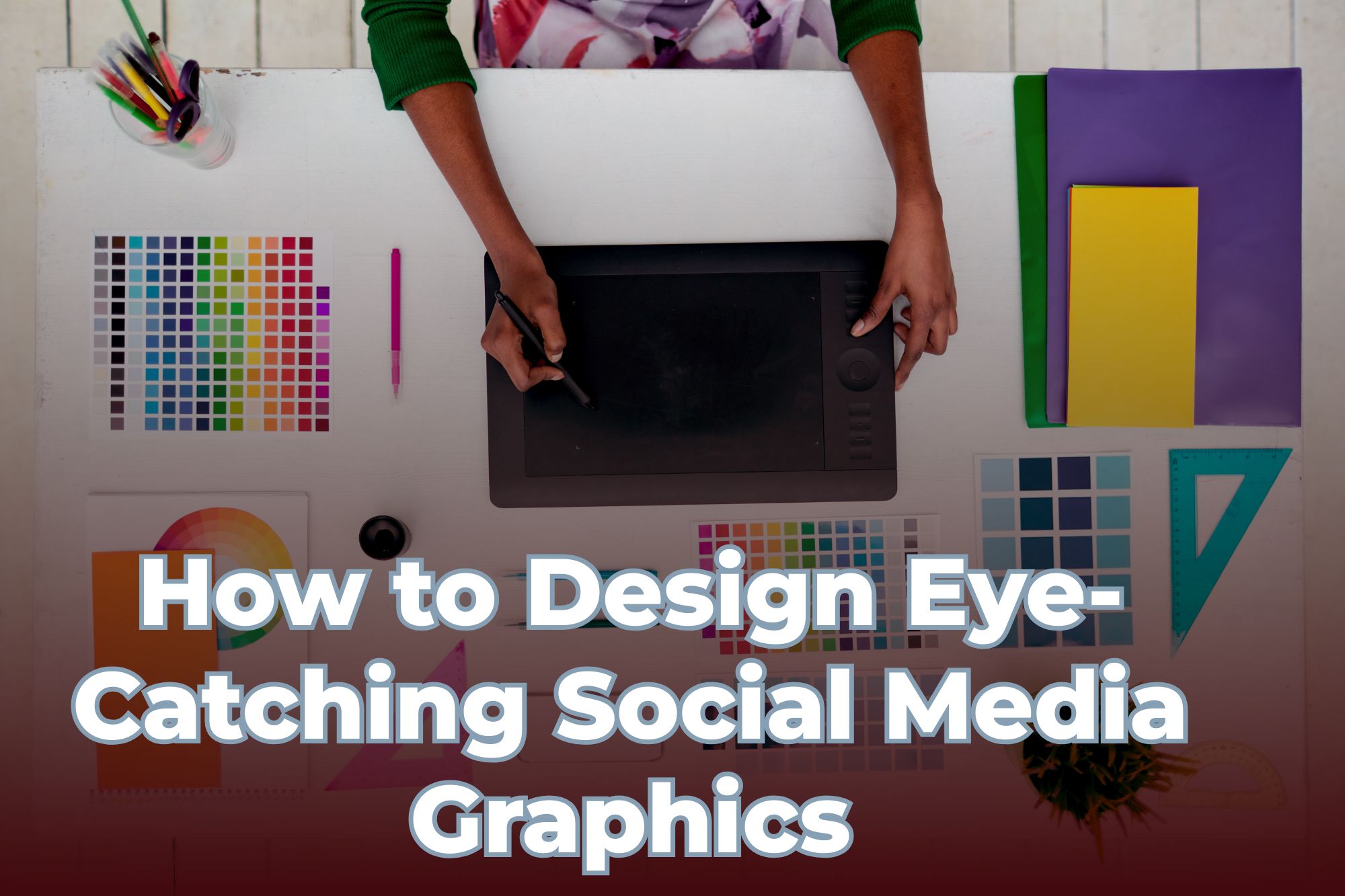
Creating eye-catching social media graphics is essential for grabbing attention and engaging your audience. Whether you’re a seasoned graphic designer or a complete novice, mastering the art of social media design can significantly boost your brand’s visibility and appeal. Here’s a comprehensive guide on how to design stunning social media graphics that captivate and convert.
Understand Your Audience
Before diving into design, it’s crucial to understand your target audience. Knowing their preferences, behaviors, and demographics will help you create content that resonates with them. Conduct surveys, analyze your current followers, and study competitors to gather insights. Tailoring your graphics to your audience’s tastes will make them more engaging and effective.
Choose the Right Tools
There are numerous tools available for creating social media graphics, each with its own strengths. Here are a few popular options:
- Canva: User-friendly with a vast array of templates and elements.
- Adobe Spark: Great for quick and stylish graphics.
- Photoshop: Offers advanced features for detailed and high-quality designs.
- Piktochart: Excellent for creating infographics and data-driven visuals.
Choose a tool that matches your skill level and the complexity of your projects.
Focus on Simplicity
One of the key principles in graphic design is simplicity. Overloading your graphics with too many elements can make them cluttered and confusing. Aim for a clean, focused design that clearly communicates your message. Use white space effectively to make your graphics more readable and visually appealing.
Use High-Quality Images
Images are the backbone of any social media graphic. Always use high-resolution images to ensure your graphics look professional. Websites like Unsplash, Pexels, and Shutterstock offer a plethora of high-quality images that you can use. When using images, make sure they are relevant to your content and resonate with your audience.
Consistent Branding
Maintaining consistent branding across your social media graphics helps build brand recognition. Use your brand’s colors, fonts, and logo consistently. Create a brand style guide if you don’t already have one. This ensures that all your graphics align with your brand identity, making your content instantly recognizable.
Leverage Color Psychology
Colors evoke emotions and can significantly impact how your audience perceives your graphics. Use color psychology to your advantage by choosing colors that align with the message you want to convey. For example, blue often represents trust and calmness, while red signifies energy and urgency. Consistent use of your brand colors also helps in reinforcing your brand identity.
Typography Matters
The fonts you choose can make or break your design. Select fonts that are easy to read and complement your overall design aesthetic. Limit yourself to two or three fonts to keep your design cohesive. Use hierarchy in your typography to guide the viewer’s eye to the most important information first.
Incorporate Engaging Elements
Adding engaging elements like icons, illustrations, and patterns can make your graphics more interesting. These elements should enhance your message, not distract from it. Be mindful of not overloading your design with too many elements. Balance is key to maintaining visual harmony.
Optimize for Each Platform
Different social media platforms have different specifications for image sizes and formats. Designing a graphic for Instagram might not work as well on Twitter or Facebook. Make sure to resize and optimize your graphics for each platform to ensure they look their best. Here are some common dimensions to keep in mind:
- Facebook: 1200 x 628 pixels
- Instagram: 1080 x 1080 pixels (square) or 1080 x 1350 pixels (portrait)
- Twitter: 1024 x 512 pixels
- Pinterest: 1000 x 1500 pixels
Use Templates Wisely
Templates can be a lifesaver when you need to create graphics quickly. They provide a solid foundation and ensure your designs are visually appealing. However, customize them to fit your brand and message. This ensures your graphics remain unique and don’t look generic.
Add Text Overlays Strategically
Text overlays can add context and make your graphics more informative. However, they should be used sparingly and placed strategically. Ensure the text is readable by choosing a contrasting color or adding a semi-transparent overlay behind the text. Keep the message concise and to the point.
Test and Analyze
Designing graphics is not a one-time task. Test different designs and analyze their performance to see what works best for your audience. Use analytics tools provided by social media platforms to track engagement metrics like likes, shares, and comments. Use this data to refine your designs and make informed decisions.
Stay Updated with Trends
The world of graphic design is ever-evolving, with new trends emerging regularly. Staying updated with the latest design trends can help keep your graphics fresh and engaging. Follow design blogs, join online communities, and take courses to keep your skills sharp and your designs relevant.
Tell a Story
Every graphic you create should tell a story or convey a message. Whether it’s a promotional post, an infographic, or a simple quote, ensure it aligns with your overall content strategy and brand voice. A compelling story behind your graphic can make it more memorable and impactful.
Call to Action
Finally, include a clear call to action (CTA) in your graphics. Whether you want your audience to visit your website, share your post, or engage in some other way, make your CTA clear and compelling. This encourages your audience to take the desired action, boosting the effectiveness of your graphic.
Conclusion
Designing eye-catching social media graphics requires a blend of creativity, strategy, and technical know-how. By understanding your audience, using the right tools, and following best practices in design, you can create stunning graphics that engage and convert. Remember to keep your designs simple, consistent with your brand, and optimized for each platform. With these tips, you’ll be well on your way to creating social media graphics that stand out in the digital crowd.
Featured Image Credit: Freepik






